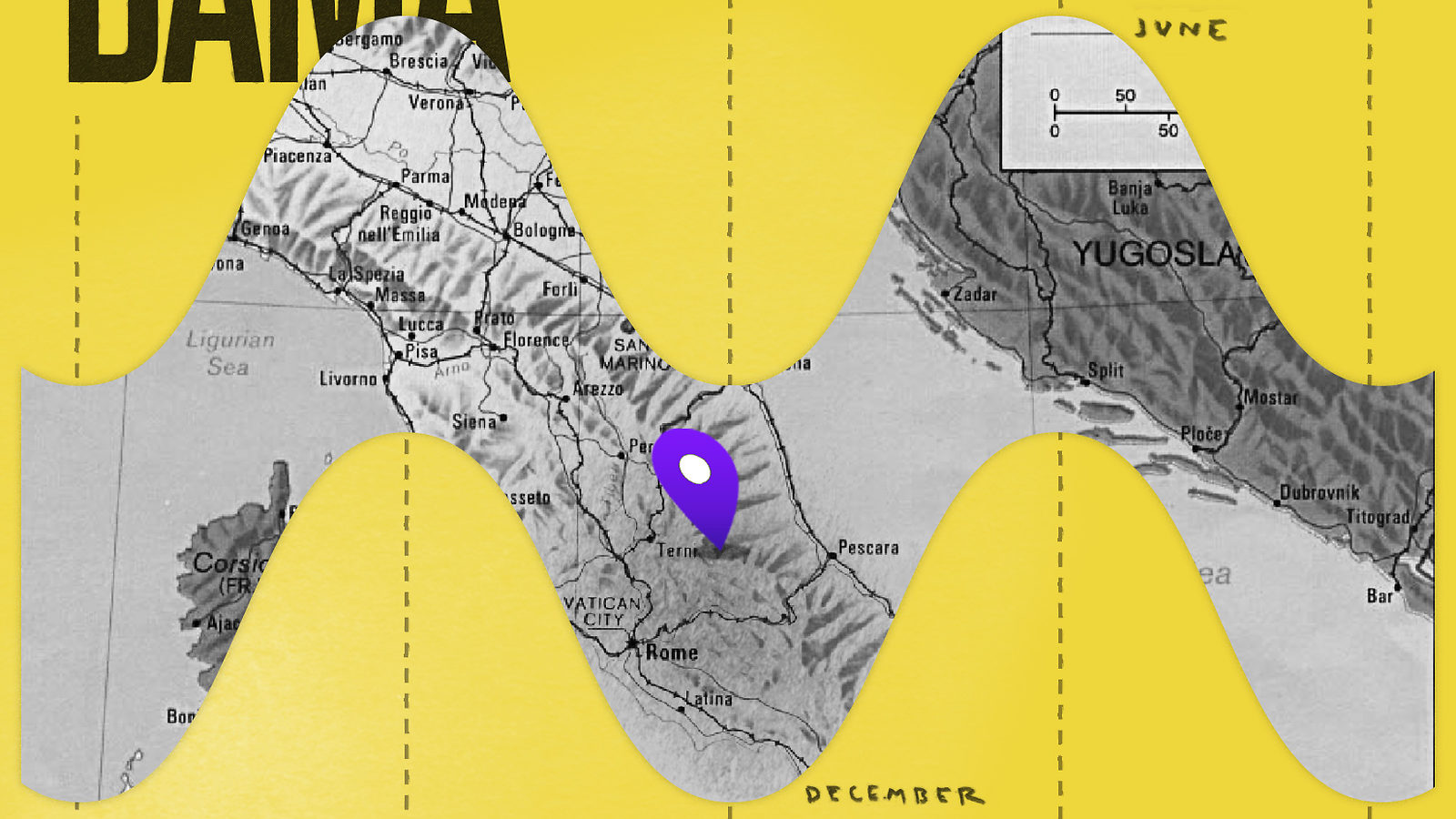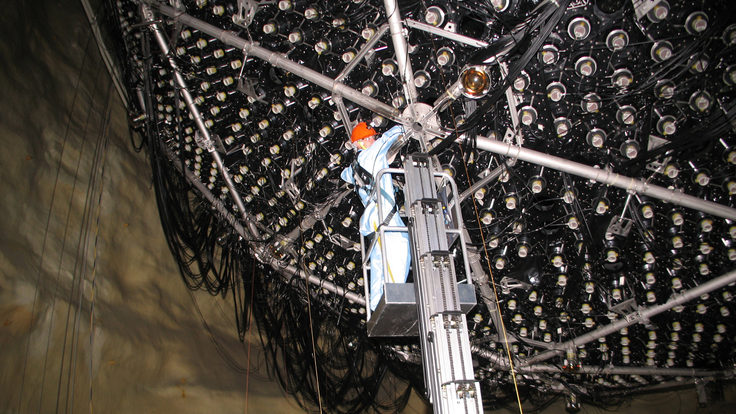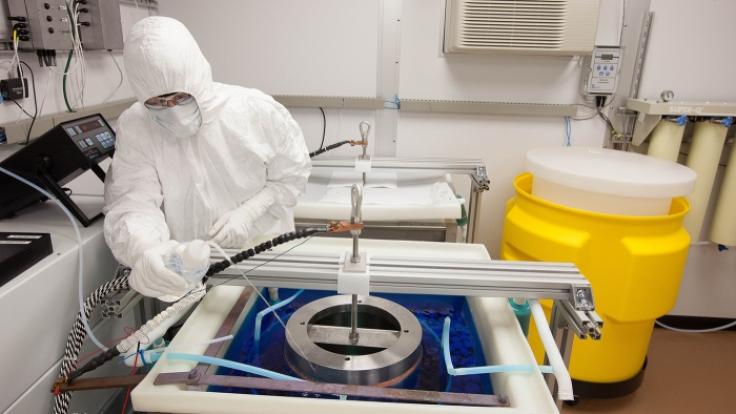For more than two decades, a detector deep beneath the Apennine Mountains in Italy has observed a regularly changing signal that its operators think comes from our planet’s movements through the “halo” of dark matter suffusing the Milky Way galaxy.
Dark matter—a substance that scientists have otherwise only indirectly detected—is thought to make up 85% of the matter in the universe. DAMA, an experiment at the Gran Sasso National Laboratory in Italy, has since 1997 reported findings consistent with its discovery. But there has not been an overwhelming consensus in the physics community that they’ve found it.
DAMA/LIBRA—the full name of the current generation of the experiment—released its most recent results in 2018. Like previous data, those findings show a signal that cycles annually, peaking in around June 2.
This so-called annual modulation is what we would expect to see happen with a dark matter signal collected on Earth. Our planet orbits the sun, which in turn moves through the Milky Way. Half of the year they’re moving in the same direction, increasing the speed with which the Earth should pass through our galaxy’s dark matter; the other half they’re moving in opposite directions, making that speed slower.
An observatory on Earth should move faster through any dark matter halo in spring than fall, resulting in an uptick in the rate of particle detection. “The effect is like a dark matter headwind,” says Jason Kumar, a physicist at the University of Hawaii at Manoa. In the Northern Hemisphere, “you would expect it to peak in June, and then see a dip in the event rate in the winter.”
Scientists don’t know exactly what dark matter is. One candidate DAMA is searching for: WIMPs, or weakly interacting massive particles. Sodium iodide crystals in DAMA’s detectors emit bursts of radiation whenever a particle (possibly a WIMP) collides with the crystals’ atomic nuclei. DAMA’s signal shows these bursts occurring in the annual cycle physicists would expect to see.
Rita Bernabei, a physicist at the University of Rome Tor Vergata and the longtime leader of DAMA, says the experiment’s signal indicates the presence of dark matter particles in the galactic halo. “There are no alternative explanations for the observed signal,” Bernabei says.
There is still some room for doubt, though: Unaccounted-for seasonal variations in environmental conditions at Gran Sasso could be causing the modulation, for example. Or it could be “systematics,” a catch-all shorthand physicists use to refer to errors in equipment calibration or experimental design. Adding to the skepticism is the fact that other dark matter detectors have yet to confirm what DAMA is seeing. But that could soon change.
Two new experiments, ANAIS and COSINE-100, are also looking for WIMPs in the galactic halo—and unlike other experiments that have attempted to verify DAMA’s signal, they’re using DAMA’s same detection material, sodium iodide.
ANAIS, a Spanish detector that is effectively a smaller version of DAMA, began collecting data in 2017. In the next few years the project should start to have statistically significant results, says ANAIS spokesperson Marisa Sarsa, a physicist at the University of Zaragoza, Spain. “If we find a similar signal with annual modulation, it will really be quite an impact,” she says.
If ANAIS finds no signal, Sarsa says the challenge will then be to determine what is actually causing the annual modulation observed by DAMA.
COSINE-100 has been taking data since 2016. Located in South Korea, that experiment’s sodium iodide crystals are submerged in 2000 liters of liquid to help reduce background noise that can complicate analysis. The experiment will have enough data to search for modulation by about 2021.
In July 2019, Reina Maruyama, a professor of physics at Yale University, was awarded a National Science Foundation grant to test DAMA’s results with the COSINE experiment. “With five years of running the experiment, if the signal is there, we should be able to see it,” Maruyama says. “If it’s not there—and this is a little harder to do, but—we’ll be able to refute it.”
If COSINE or ANAIS does see a signal that appears to confirm DAMA’s results, the next step would be to confirm the finding with a detector in the Southern hemisphere. Construction is slated to begin this fall on an experiment named SABRE, a dark matter detector that will be located in a former gold mine in western Australia.
A confirmation that DAMA is indeed seeing dark matter would open another gold mine of sorts. Katherine Freese, a theoretical astrophysicist at the University of Texas, first proposed the technique of searching for an annual modulation of the dark matter signal in the galactic halo in 1986. Freese says that if the DAMA signal is confirmed, physicists would then have to start exploring the properties of the particles making the signal. “You would try to figure out what is the mass of the particle, what is the scattering strength of the particle, and what is the interaction [with the detector], in detail,” she says. “And then we’ll keep going with other experiments until we figure out exactly what its details are.”
Meanwhile, DAMA/LIBRA is still taking data. Researchers at Gran Sasso are developing a new phase of the experiment that will increase the instrument’s sensitivity and decrease its energy threshold. Their goals, Bernabei says, are to improve the precision on the dark matter annual modulation parameters, potentially disentangle various scenarios that could explain the mysterious signal, and possibly explore a joint detection of its annual modulation.
Whatever ANAIS and COSINE-100 do ultimately find, pinning down the source of the mysterious annually cycling signal will be a major step forward in the search for dark matter in the Milky Way.
“If we don’t see anything, then I think the community can really move on and focus on clearing up the dark matter landscape,” Maruyama says. “If we see a signal?” She pauses, considering the consequence of confirming DAMA after all these years. “I think we’d really open up the field. And that’s really exciting.”












